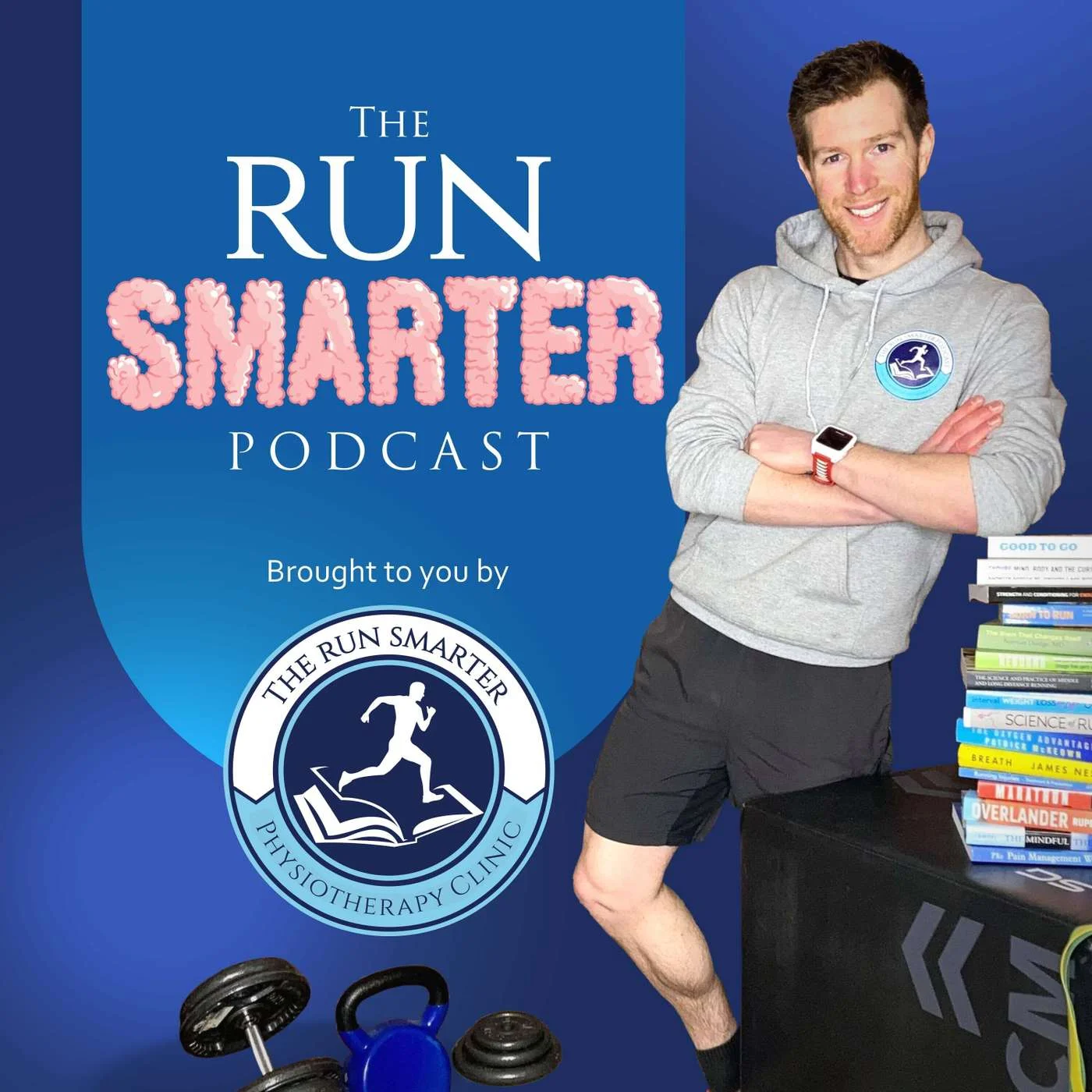
The Run Smarter Podcast

Exclusive AMA: Managing Multiple Injuries / Heart Rate Discrepancies / Stitches / Rotating Shoes
41m
Learn more about Brodie's Research Database & AI Assistant 📄🔍
For MORE Run Smarter Resources 🏃♂️📚
- Including Free Injury Prevention Courses 🩹🎓
- The Run Smarter Book 📖
- Access to Research Papers 📄🔍
- & Ways to Work with Brodie 🤝👟
👉 CLICK HERE! 🎉✨
Topics Covered
Managing Multiple Injuries (e.g., Plantar Fasciitis & PHT)
- How to prioritize the most debilitating injury using key factors:
- Severity
- Duration
- Irritability
- Predictability
- Why you should focus on “bang for your buck” exercises (e.g., deadlifts, hamstring curls, calf raises).
- How to combine exercises to target multiple injuries efficiently (e.g., barefoot single-leg deadlifts).
- The importance of progressive overload in rehab — not just maintaining bodyweight work.
- How to stay active during flare-ups and make sure both injuries are improving week to week
- Why Running Can Feel Easier Than Cycling (Despite a Higher Heart Rate)
- How steady-state cardio explains why running can feel smoother than a variable spin class.
- The impact of heat, humidity, and muscle groups used on perceived effort.
- How familiarity with a movement can affect heart rate and effort perception.
- The “central governor theory” — how your brain regulates fatigue and effort.
- Brodie’s personal story: going from marathon runner to struggling to swim 50 meters, and how adaptation and calmness change everything.
What Causes Stitches — and Can You Stop Them?
- Why side stitches remain somewhat mysterious despite many theories.
- Possible causes:
- Fatigue or imbalance in trunk/core muscles
- Diaphragm displacement theories (including a strange but possibly effective breathing trick!)
- Why core workouts the day before a run can trigger stitches — and what Brodie learned from experience.
- An invitation for listeners to test and report back on the “left heel drop and exhale” technique.
Should You Rotate Your Running Shoes?
- Difference between rotating the same model vs different brands and types.
- How lighter and super shoes can improve performance — and when they can backfire.
- Using shoes as tools: minimalist for speed and proprioception, stability shoes for recovery days.
- The double-edged sword:
- Poor transitions = increased injury risk.
- Gradual adaptation = greater resilience and reduced overuse risk.
- Why shoe variation can distribute load and lower repetitive stress when done properly.
Key Takeaways
- Focus rehab on the most limiting injury first, and keep it progressive.
- Familiarity plays a massive role in perceived exertion between different activities.
- Side stitches may stem from muscle fatigue or diaphragm misalignment — and could respond to strategic breathing.
- Rotating shoes can either reduce or increase injury risk — it depends entirely on how gradually you adapt to each type.

